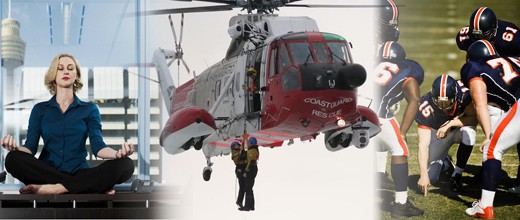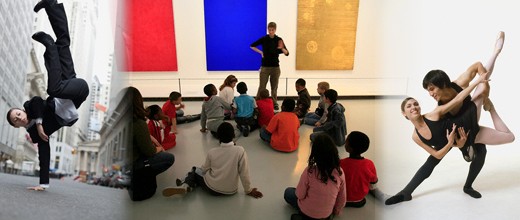Website sections:
Current section's content:
- You Can Manage and Program Creativity
- Creative Abilities and Creative Thinking Skills Management
- Briefly About CreativityModel Method Usage
- CreativityModel Method Usage Opportunities and End-User License Agreement
- Current Version of CreativityModel Method
- CreativityModel Method Abstract
- CreativityModel Method Version Changes
- CreativityModel Method Glossary
- Explanation of the Method's Component Parts and How the Component Parts Interact
- Explanation of How the Method's User Achieves Results
- CreativityModel Method - Generate Dots, Connect the Dots
- CreativityModel Method Usage Areas
- The Artist in You
- Growth of the Artist in You
- The Result Getter in You
- Applying the Result Getter in You
- About Choice Supported Creativity Usage
- The Problematic Side of Business Creativity
- Creativity Management and Business Creativity
- Sales CRM Software Development Example
- Why Does Creativity Management Matter and What Can You Do About This?
- Goal Oriented Creativity Management and CreativityModel Method
- Goal Oriented Creativity Management and Your Personal and Professional Life
- Teenager, Version 1 - Confusion
- Teenager, Version 2 - Career Development and Life Management
- Managers, Version 1 - Zigzagging Business Development
- Managers, Version 2 - Innovation Management and New Product and Service Development
- The President, Version 1 - Some of It Did Happen
- The President, Version 2 - Self-Expression, Conflict Resolution, Creativity and Leadership
- CreativityModel Method Development Background
- Further Development of CreativityModel Method




















You Can Manage and Program Creativity
Bottom Line Questions and Answers
"OK, so, you have this CreativityModel Method creativity management method, or whatever you call it."
"What's creativity management?"
"The bottom line question: What can I do with it?"
The above summarizes the conversations that I have had on CreativityModel Method. Of course, such questions are natural, because in many ways CreativityModel Method is something new, and its usage opportunities are not apparent at the first sight.
So, here are answers to the above questions.
Creativity management is management of creative thinking skills and other mental processes of an individual person or a group of people. That is, creativity management is controlling, arranging and directing usage of the creative thinking skills and other mental processes of an individual person or a group of people.
You can use CreativityModel Method for managing your own and other people's creative thinking skills. This allows you to achieve more, to be more effective and to reduce the number of creativity management mistakes that will be made.
CreativityModel Method is closely related to project development and management, because it is applicable to any activity that requires creative development efforts or planning. Thus, it is relevant to business and personal projects small and large, including IT projects, educational and professional development projects and business and organizational development.
For example, you can train yourself so that it will become your second nature to focus on objectives and goals when doing so is necessary, and to proceed self-expressively, when artistic creativity is needed, and to mix the two creativity management approaches fluently within your abilities, experience and expertise levels. This is especially applicable to business projects and can make a big difference in the outcome of a project.
Any process, where you need to create output that is qualitatively different from input requires creativity. CreativityModel Method principles allow you to put together outcomes effectively, so that you optimize usage of your experiences and expertise levels. Again, the same applies to managing other people's creative thinking skills, and to projects, small and big, that require generating qualitatively appealing solutions or achievement of specific goals, or both.
The above explanations and definitions are based on CreativityModel Method and its Glossary. The relevant information is available on this website.
Next, little bit of additional information that helps to understand this project.
Project Development Summary
Over the years I have done quite a bit of work on analyzing creativity management, focusing mostly on evaluating how a person can manage his or her own creative thinking skills, and creative thinking skills of other people. This has helped me to understand my own thought processes better, and to optimize my professional efforts within my abilities, experience and expertise levels.
In the process I concluded, that there are two main creativity management approaches: self-expressive artistic creativity, and goal oriented business creativity.
Using the two in appropriate circumstances increases the quality of the outcome, while mismatched usage of creativity management approaches is likely to have an opposite effect.
- If you let the self-expressive creativity to drive decision making in situations that require goal-oriented handling, it is very likely that your doing so will cause problems, which sometimes can be rather serious ones.
- If you use goal-oriented creativity in circumstances that require self-expressive creativity usage, it is likely that the outcome ends up being dull and uninspiring.
That's the bad news. Based on my own experience, the good news is, that both self-expressive artistic creativity, and goal oriented business creativity management skills can be trained. Similarly, the mismatched usage of creative approaches can be changed by training the relevant skills.
Further, for years I have felt that computer usage can help me to be more creative. I searched for, but did not find any good explanations on why this is the case.
I also searched for, but did not find any sufficiently comprehensive method that I could use for managing my creative thinking processes. So, I decided to research and analyze these areas further and to put together a creativity management method myself.
As a technical business analyst, I have documented some very complex information flows and workflows, and also built computer applications based on these documents.
So, I was wondering, if it is also possible to document human creativity similarly to documenting business transactions related subject matters and information flows and workflows?
Can the outcome also be rendered programmable?
I decided to document creative thinking processes, both my own and these, for which I could find sources that allow me to observe the creative processes (documentaries, for example). I listed some of the sources that I used in the end of the CreativityModel Method Development Background article.
The approach that I used is somewhat similar to documenting IT business analysis cases for complex applications, except that for project specific rules used US patent application filing guidelines.
The end result is CreativityModel Method creative thinking skills management method that addresses goal oriented business creativity and self-expressive artistic creativity usage, so that both types of creative thinking skills can be combined as necessary.
CreativityModel Method usage can help to manage, that is, knowingly and consciously control, arrange and direct self-expressive and goal oriented thinking.
The two types of creative approaches are addressed from creative thinking skills management perspective. Skills can be learned and trained within individual person's abilities, expertise and experience.
Summary of Conclusions
When I describe CreativityModel Method initial versions I try to avoid drawing or implying any firm conclusions. The approach that I used for putting together these CreativityModel Method versions was based on observations that were not scientific. For this reason, below I am using repeatedly the phrase "it is likely."
- It is likely that you do manage your creative thinking skills daily, even though you may not give these processes much thought during your everyday life.
- It is also likely that in addition to doing so subconsciously, you can also manage your creative thinking skills by knowingly, consciously controlling, arranging and directing usage of your goal oriented and self-expressive thoughts. These processes are not very complicated. The catch is, that you can do this within your abilities, expertise and experience levels.
- It is also likely that you can learn to manage your goal oriented and self-expressive creativity and train yourself in the relevant areas.
- It is also likely that CreativityModel Method principles can be programmed into computer applications, so that intelligently behaving computer application functionality can be built with less resources than artificial intelligence engineering and expert systems require.
I have done years of work on the above areas, as a hobby. In this website section are some of my insights. In addition to explanatory articles, this website contains also CreativityModel Method's full formal version.
For me, writing these articles has been a form of meditation and exploration. These articles are about creativity management, but writing them has also helped me to understand creativity management better than I did before.
Further, because I worked on this project alone, I wanted to work reflectively, by generating feedback in one person community. Writing about creativity management, and using creativity management principles in the process, combined with computer usage, helped me to accomplish this - within my abilities, experience and expertise levels.

